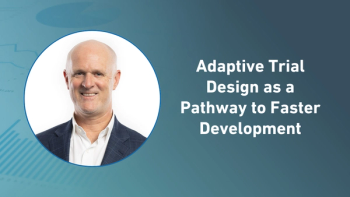
Complexities in Data Collection
In this video interview with ACT editor Andy Studna, Erin Erginer, director of product, Certara highlights challenges with data volume and complexity.
In a recent video interview with Applied Clinical Trials, Erin Erginer, director of product, Certara discussed the growing complexity and volume of data in clinical trials. Data is now captured from biospecimens and digital health technologies, including advanced genetic and imaging data. Regulatory agencies require standardized data submission for analysis, but do not dictate collection methods, leaving pharma companies to develop their own standards. Lack of standards leads to inefficiencies, with only 20% of studies meeting deadlines, causing significant delays and costs. Improper data collection can lead to missed endpoints and regulatory issues. Collaboration among pharma companies and external vendors is crucial for improving data standards and trial efficiency.
ACT: What are some common data collection challenges you are currently seeing in clinical trials?
Erginer: I think the biggest issue with data collection right now is that the volume and complexity of the data that's being captured for clinical trials is growing exponentially. The average number of data points that's used per clinical trial these days is over 3.6 million data points, and that number is up about three times what it was a decade ago, so it's very difficult to deal with that massive quantity of data, especially when it's more complicated than it ever was in the past. Historically, data was collected at the very beginning of a trial using an EDC system, so essentially what's captured at the site, but really, we've moved away from the traditional EDC approach, where most of the clinical trial data is now captured outside of the EDC in two different categories. There is data that's captured, that's biospecimen data, and that's data that is taken directly from a patient, an actual physical sample. Then there's also a lot of data, especially with the modern technology, that's being captured digitally, so digital health technology data. In those two categories, the science is moving a lot faster than what our industry can keep up with, because the new science is very cool, and it's got a lot of good benefits to the insights you can gain from that data. Historically, biospecimen results you would find in a clinical trial would be more things like concentration data, but now we've been able to capture things like genetic sequencing data, immunohistochemistry data and all kinds of very complicated data. On top of that, we've got data coming in from this new technology, so earlier studies would have things like you can measure your heart rate or do an EKG, and now we can capture data that's like ocular imaging data and all kinds of PET scans and CAT scans, so trying to navigate this entire bolus of data and then categorize it in a way that can be used downstream has been very, very challenging for clinical trials, because if you remember, it's not just that you're trying to capture the result of what you're doing, you have to capture all of that additional information and metadata that explains why that result is important and gives the information that's needed to actually be able to take that data and get out some meaningful results in there. I think really just the challenge of trying to deal with all of that massive amount of data and present it to all of the different users that need to be able to interact with that data and use that data to make valuable decisions and then report to the regulatory agencies, is very challenging. That's something that there's a lot of focus right now on, building up better metadata in the very beginning of your trial to be able to manage that as that data changes throughout the study lifecycle.
Newsletter
Stay current in clinical research with Applied Clinical Trials, providing expert insights, regulatory updates, and practical strategies for successful clinical trial design and execution.






.png)



.png)



.png)
.png)
